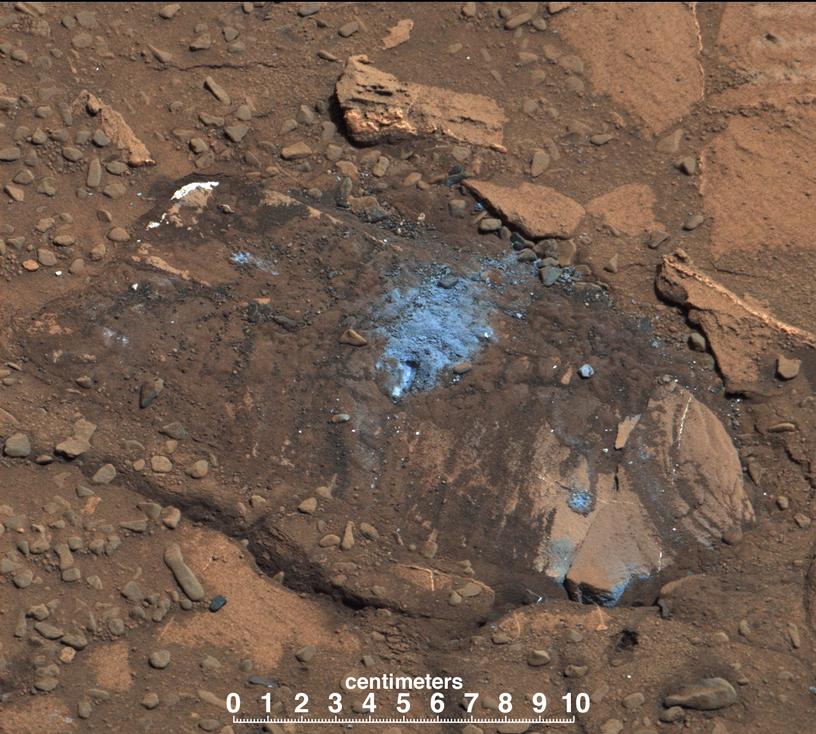Loose Rock Leads to Incomplete Drilling

| Credit | NASA/JPL-Caltech/MSSS |
|---|---|
| Language |
|
The "Bonanza King" rock on Mars, pictured here, was tapped by the drill belonging to NASA's Mars rover Curiosity. The tapping resulted in sand piling up on the rock after drilling, showing the rock was not firmly in place. Because of the loose rock, the drill hole was not completed.
Vibrations from the drilling cleaned off some of the rock veins, revealing a lighter color. The tailings from the incomplete drill hole are actually a gray-green color.
This image was taken by the rover's Mast Camera (Mastcam). It has been white-balanced to show how the scene would appear under Earth's lighting conditions.
NASA's Jet Propulsion Laboratory, a division of the California Institute of Technology, Pasadena, manages the Mars Science Laboratory Project for NASA's Science Mission Directorate, Washington. JPL designed and built the project's Curiosity rover. Malin Space Science Systems, San Diego, built and operates the rover's Mastcam.
More information about Curiosity is online at http://www.nasa.gov/msl and http://mars.jpl.nasa.gov/msl/.

